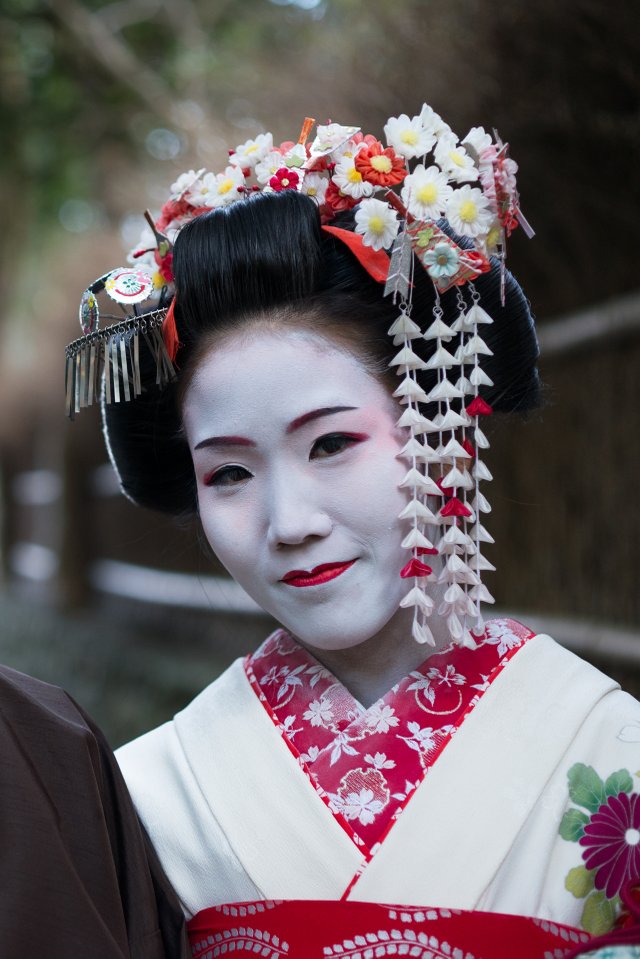Ever heard of Geisha coffee? Geisha's (literally “art persons”) are female Japanese entertainers: art, singing and dancing. What do they have to do with coffee? Well, absolutely nothing. “Geisha” is a homophone of "Gesha". In 2004 the Gesha coffee variety appeared on the Best of Panama specialty coffee auction and since then, the variety has obtained several record prices at auctions and several victories at barista competitions.

Source: https://www.flickr.com/photos/mashipooh/8463766751/
The Gesha coffee variety has been known since a British colonial expedition in the 1930s went to southwest Ethiopia. It was brought to research stations in other countries and it was discovered to have coffee leaf rust-resistant traits. Coffee leaf rust was and still is a very big problem, especially in Central America, so it is no big surprise that this variety was experimented with in these countries. Gesha seeds were introduced to Panama from a research station in Costa Rica. But how did spelling of this Ethiopian variety get from Gesha to Geisha, leading to pictures of these nice Japanese ladies on coffee packaging?
In 1936 British colonials mentioned a certain “Geisha Mountain” but there is no such mountain in Ethiopia, only a Gesha region. It might just be a case of misspelling, but it is also possible Gesha was simply romanized into “Geisha” and it got written as such. However it may be, Gesha coffee got known in Central America as Geisha coffee (as opposed to other parts of the world) and since the Peterson family of Hacienda La Esmeralda submitted it as such and won the Best of Panama auction in 2004 and astounded the whole world with its taste, Geisha coffee got famous. Personally I tend to use Gesha when talking (writing) about the variety and Geisha when it’s packaged.
In 2004 Gesha coffee got the highest ratings ever awarded in a green coffee competition and the winning bid on the auction was $21 per pound (last year the record price was around $800 per pound!). As other coffee producing regions wanted to replicate the success of the Panamanian “Geisha” coffee, this spelling got more and more used and nice Japanese ladies started to get pictured on coffee packaging. Good marketing I think.
Gesha coffees are rare, expensive, and often given notes like “delicate” and “floral.” It is said that it tastes dramatically better, bigger-bodied and brighter, more complex and distinctive in aroma and flavor from other Arabica coffees. Most Arabica coffee varieties, until Gesha, are quite similar in their genetic makeup, as well as in how they taste in the cup, the genetic diversity is consequently quite low. As a matter fact, this coffee finally proves that different varieties definitely taste different (something coffee scientists, a lot of consumers and even the commercial coffee industry, were not convinced of). So cup character is of importance when developing new and distinctive-tasting varieties and it is not simply an invention of coffee snobs.
So Gesha or Geisha is greatly valued and appraised by professionals and barristas. However, it has not found its way yet to the general public (and maybe never will). So, is it a snob thing? Let’s take a look at the consumer side. In bars and cafés 80% of the coffees served are espresso based. Coffee lovers often ask for tall milk-based drinks with a dark toast blend that brings out the chocolate and caramelized flavors (while sacrificing the more complex flavors). Lots of people who like coffee prefer it strong.
Geisha coffee is expensive, quite expensive, and its taste and flavors is complex and can only be appreciated when filtered; it does not do as espresso or a dark roast and several times it has actually been compared with Earl Grey tea and some find it too gentle to even be considered as coffee!
Previous article from coffee series you can find under tag #cafescope.
You can see them all here.
Article was also published on Cafescope